The King's Road - the imperial communication network
The Neo-Assyrian state maintained a privileged communication system for state letters and envoys travelling on state business. This administrative innovation may well constitute Assyria's most important contribution to the art of government and subsequently became a standard tool in the administration of empires.
Road stations across the empire
This communication system is likely to be an innovation of the reign of Shalmaneser III (858-824 BC) when a number of administrative reforms successfully aimed at consolidating the territorial gains of the past century and securing Assyria's position as the foremost power in the region. The ability to quickly and reliably communicate across vast distances turned out to be a key element in the cohesion of the empire.
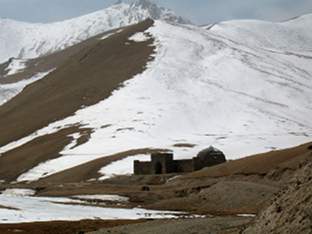
All Assyrian governors had to maintain road stations in strategic positions within their province that served as stages and often also intersections of the imperial communication network known as the "King's Road" (hūl šarri). These road stations were either situated within existing settlements (such as in the city of Nippur, see SAA 18 192) or constituted settlements of their own, with the necessary agricultural basis to provide for personnel, envoys and transport animals. The Assyrian term for such institutions is bēt mardēti (literally "house of a route's stage") and how they were mananged and maintained during the reign of Sargon II (721-705 BC) emerges from a letter of his governor of the province of Ṣubutu, centred on the Beq'a plain in Lebanon, concerning problems with the running of his two post stations (SAA 1 177).
While the caravanserais of the medieval Muslim world may serve as a convenient comparison in that they, too, are purpose-built structures along long-distance routes providing short-term shelter and protection for travellers and their animals, the key difference is that the state-run Assyrian road stations served only the state and were not open to commercial travellers. Although no bēt mardēti has yet been identified archaeologically it is clear that we must therefore expect buildings of a far smaller scale as there was no need for stabling large numbers of pack animals and storing huge quantities of merchandise.
The original hybrid transport technology: the mule
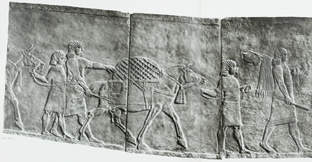
The Assyrian imperial communication network relied on mounted messengers and the exclusive transport animal used for this purpose was the mule (kūdunu), always employed in pairs - a strategy intended to reduce the chance of the rider ever being left stranded with a lame animal. The offspring of a horse mother and a donkey father, mules mature five years later than both parent animals but have a longer working life of up to twenty years. Physically, they combine the body of a horse with the extremities of a donkey and often grow taller than both parents. Importantly, maintaining the foot of a mule requires substantially less time and care than that of a horse.
As hybrids, mules are always infertile and this is the subject of an Assyrian curse:
"Just as a mule has no offspring, may your name, your seed, and the seed of your sons and your daughters disappear from the land." (SAA 2 6: 537-539)
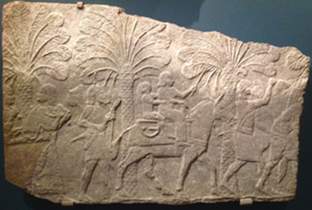
In addition to the mule's slower physical development and the need for extensive yet sensitive training, its infertility makes it a very expensive initial investment. In an Assyrian debt note from 670 BC (SAA 6 206), the return of a mule to the army commander who was responsible for it is guaranteed with the extraordinarily high penalty payment of thirty minas of silver when the average prize for a slave was just under one mina of silver.
How the Assyrian state procured the mules is unknown - were they purpose-bred or bought? The necessary early expenses were in any case easily offset by the fact that mules are stronger and more resilient than horses while sharing the donkey's sure-footedness and instinct for self-preservation; they are also good swimmers. While the Assyrian state is the first in world history to have realised the potential of mules for its purposes, the military use of this animal has continued into the present, especially in difficult terrain (cf. a report on the use of mules in the US military by Susan Orlean in The New Yorker [http://www.10secondestigre.com/wp-content/uploads/2010/02/new-yorker-mules-in-the-military-edfev15_2010.pdf], February 15 & 22, 2010).
Making speed: the first relay communications system
Messages exchanged between the king and his governors in the provinces and his delegates abroad could be delivered either by letter or by envoy. The first method was considerably faster, as the letter was passed on in a relay system (kalliu) to a new courier with a fresh pair of mules after reaching a post station, enabling it to travel on without delay. This may seem an obvious course of action but the disassociation between letter and courier was in fact an innovation of the Neo-Assyrian state and one that allowed unprecedented speed.
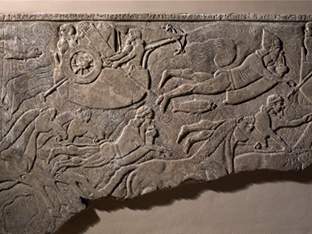
As an example, let us have a look at one route of the King's Road and find out how long it would have taken to travel from the border province of Que PGP , roughly corresponding to the plain of modern Adana, to the Assyrian heartland. The distance as the crow flies is about 700 km, or 430 miles, and this route corresponds closely to the actual itinerary used in the Neo-Assyrian period, which follows the southern flank of the Taurus PGP mountain range. We cannot take regular nocturnal travel for granted (although a mule that is familiar with the terrain is able to travel at night). If, therefore, we assume 16 hours of travel per day, with a regular change of mules enabling an average speed of 8-10 miles per hour (source: The American Donkey and Mule Society [http://www.lovelongears.com/faq]), then the distance from Que to central Assyria can be covered in three days. There are, after all, no major differences in altitude to overcome, unlike when travelling in the mountainous regions in the east and north of the Assyrian heartland: how very straining these routes could be for the animals emerges from a letter to Sargon, a reaction to the complaints of one imperial envoy who found himself insufficiently provisioned with mules when travelling from the province of Arzuhina PGP across the Qara Dagh mountain range to the province of Mazamua PGP (SAA 5 227). But in addition to covering the sheer distance, two major and several minor rivers needed to be crossed in order to reach the Assyrian heartland from Que, and none of them had a bridge leading across it. This meant using a ferry to traverse the Euphrates at Til-Barsip PGP and the Tigris at Nineveh, and fords at the Balih south of Harran and across several tributaries of the Habur between Guzana PGP and Naṣibina PGP , lengthening the travel time significantly. It will therefore have taken four or even five days to deliver a letter from Que to central Assyria. But even with this time, the Neo-Assyrian relay system still set the standard for communication speed in the Middle East for almost three millennia, until the advent of the telegraph in the Ottoman Empire in 1865.
Whenever communication speed was not considered vital, messages could be transported by just one envoy travelling across the whole distance; in such cases, the envoy would seem to be more important than the letter. Envoys were certainly the preferred means of communication whenever the message was very sensitive or when it was important that a decision could be made on the spot. Many letters show how the Assyrian communication system routinely used the two methods side by side, for example a letter from crown prince Sennacherib to his father Sargon (SAA 1 31).
Authorisation needed
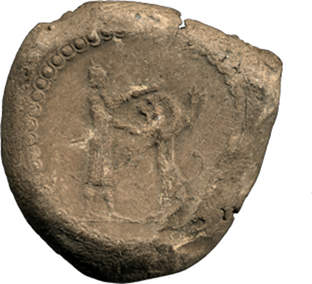
The imperial post system was designed to allow the king and his officials all over the empire to communicate as reliably and as fast as possible. But the circle of people who were allowed to make use of this resource was severely restricted. Essentially, it was at the disposal of those who had been formally appointed to a state office. As the magnates of Assyria all received a signet ring (unqu) with the imperial seal showing the king killing a lion as a symbol of their office and as a tool to act in the king's stead, it was this universally recognisable seal which they used to mark their state letters. This enabled all those playing a role in the transmission of their missives, such as the personnel of the road stations and the king's secretaries, to instantly identify them as letters of state importance and to treat them with the required attention and urgency.
But how often and how regularly did the Assyrian officials correspond with their king? The main duty of the state officials was without any doubt to act on behalf of the king wherever and whenever he himself could not be present. The officials were appointed in order to exercise power locally on behalf of the crown and, in doing so, were meant to rely on their own judgment. They therefore wrote only when they needed to involve the central administration in their decision-making or in order to pass on essential information, and consequently the bulk of their letters deals with the unexpected rather than with routine matters: opportunities arising and catastrophes unfolding, turns of events that galvanise or, on occasion, stupefy the wardens of the Assyrian Empire.
Owing to their nature, many of the letters - including those discussing the imperial communication network - focus on problems, hiccups and challenges. To ignore this when dealing with these sources will invariably result in a negative assessment of the capabilities of the Assyrian administration.
Further reading:
Kessler, '"Royal Roads" and other questions of the Neo-Assyrian communication system', 1997.
Radner, 'Royal pen pals: the kings of Assyria in correspondence with officials, clients and total strangers (8th and 7th centuries BC)', 2012 (forthcoming).
Content last modified: 5 Nov 2012.
Karen Radner
Karen Radner, 'The King's Road - the imperial communication network', Assyrian empire builders, University College London, 2012 [http://www.ucl.ac.uk/sargon/essentials/governors/thekingsroad/]